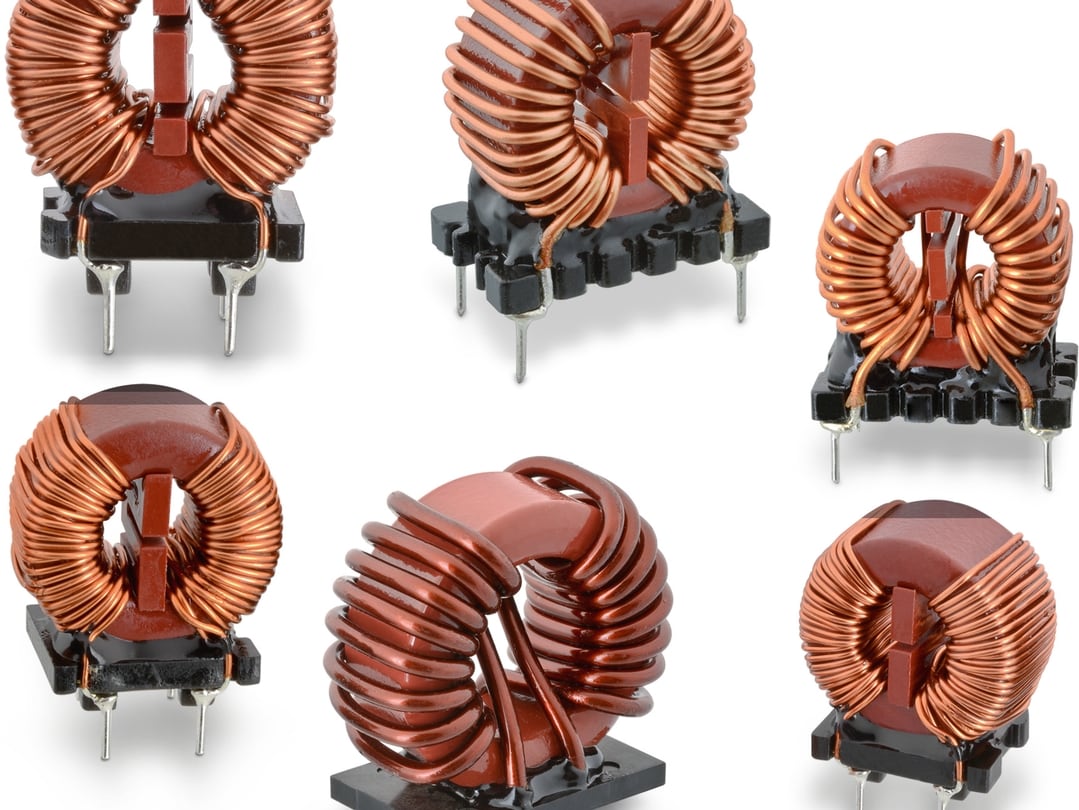

Differential Interference
First, we examine differential interference. With differential interference, what occurs through the device is that for any signal transmission from the line side, there should be an equal return on the neutral side. Whatever is crossing from your line (or the topside) back through the neutral (bottom side), should be cross-canceling. What is happening is that you're not going to get any unwanted noise in a differential mode if there is equal signal cancellation. When these types of transmissions are not balanced and cancelling, there will be the occurrence of differential noise.
Common Mode Noise
Sometimes you want common mode impedance, but very little differential mode impedance. Look at comparisons for various parts between common mode chokes. There is a considerable difference between a single choke used for differential mode suppression, and a current compensated (or common mode choke) used for common mode suppression. The main difference between the two parts is that in the common mode choke, there are two windings or multiple windings, meaning you can have a three line winding, or more. You can have four line carriers as well, but all the windings are on a common core.
On a common mode choke, the core material keeps the windings coupled together. By contrast, the single choke or single winding inductors have just the one winding on the one core. This is a chart showing the difference of common mode impedance. Obviously, a common mode choke would have common mode impedances to suppress unwanted common mode noise. For a communication or signal application, it would be beneficial to have very low differential noise suppression on the common mode choke Even though we're talking about common mode chokes, every common mode choke will also have some differential mode impedance as well. It is important that the differential suppression is not at the transmitted signal frequency, so as not to distort the signal.
Common Mode Choke vs. Single Choke
Sometimes you want common mode impedance, but very little differential mode impedance. Look at comparisons for various parts between common mode chokes. There is a considerable difference between a single choke used for differential mode suppression, and a current compensated (or common mode choke) used for common mode suppression. The main difference between the two parts is that in the common mode choke, there are two windings or multiple windings, meaning you can have a three line winding, or more. You can have four line carriers as well, but all the windings are on a common core.
On a common mode choke, the core material keeps the windings coupled together. By contrast, the single choke or single winding inductors have just the one winding on the one core. This is a chart showing the difference of common mode impedance. Obviously, a common mode choke would have common mode impedances to suppress unwanted common mode noise. For a communication or signal application, it would be beneficial to have very low differential noise suppression on the common mode choke Even though we're talking about common mode chokes, every common mode choke will also have some differential mode impedance as well. It is important that the differential suppression is not at the transmitted signal frequency, so as not to distort the signal.
